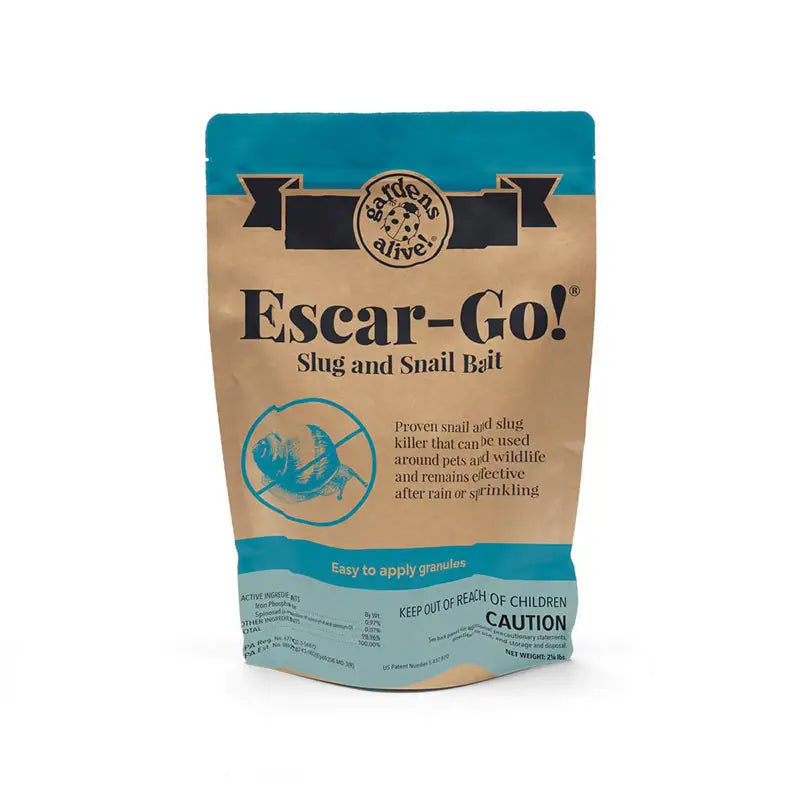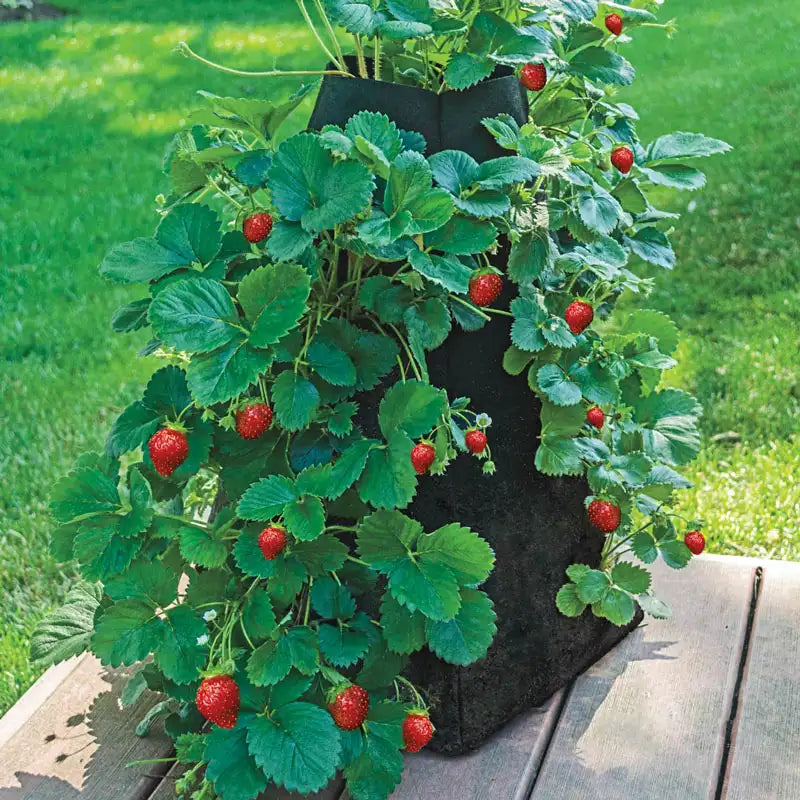The Wild Strawberry That Is not a Weed
Q: I heard you mention wild strawberries on a show last year, and how the small plants were used to develop modern strawberries. I was happy to hear that discussion as I have a story about them. About 25 years ago we were visiting friends who live near Sellersville PA, and they told us they had wild strawberries in their back field. We were skeptical, but they told us that the plants were fruiting, so we took a walk and finally noticed some small plants with the right-shaped leaves. After some searching through the leaves we found a few ripe fruits that looked like miniature strawberries, about 1/4" wide at the most. They burst with a flavor that was at least as intense an any full-sized strawberry I've ever tasted.
We've always liked wild berries, and asked if we could dig up a few and take them back to our home in Southern Delaware County. The small plants had barely any roots, but they took hold and spread in every direction. They now cover an area of about 200 square feet, and in late spring we can generally find a few berries a day for several weeks. (I suspect that birds and slugs are also getting some.) It now occurs to me that I could use them as a ground cover in some of the small flower beds around the house. We love seeking out the green leaves and white flowers on our hands and knees every Spring. We only get three or four berries a day, but what a treat!
…But should I fear setting an invasive loose in the neighborhood? (They are so hardy and persistent that they've pushed out some Creeping Charlie!)
---David in Ridley Park PA
A. OK—so what's going on here?
Virtually all of our "wild strawberry" queries concern a weedy vining groundcover that produces totally tasteless little button-shaped red fruits. But the flavor David describes in other sections of his lengthy email ("sugary and aromatic") is much more like the tiny little "alpine strawberries" I've been growing for decades.
Except that my alpines are clumping plants—no runners—and they produce all season long, while the "wild strawberries" that David describes are early summer treats that grow in clumps like my alpines but also send out lateral runners, like the despised lawn weed (which IS a member of the otherwise tasty "Fragaria" family, by the way. It's just the only strawberry that doesn't taste good).
So: we got two kinds of tiny strawberries that taste good (maybe three; read on…), one tiny strawberry that tastes awful and a whole bunch of bigger strawberries that home gardeners and farmers grow.
David's plants are Fragaria vesca (although some sources call them Fragaria virginia, or 'the Virginia Strawberry'). They occur over a wide range of the United States and Canada, and as David notes, bear small amounts of tasty fruits for a short period of time in the late spring/early summer.
Then you have the "woodland strawberry". These cute little berries were discovered long ago in wooded areas of rural France and were eventually used in breeding programs to create our familiar large, modern strawberries beginning back in the 16th Century. Although there's some confusion about lore and descriptions, these berries appear to be a lot like David's springtime treats, and they share the same scientific name. (At least the 'vesca' one.)
And that brings us to 'my' alpines.
The fruits of "alpine strawberries" are somewhat smaller than the true French 'woodland' strawberry, but their flavor is just as intense—and they flower and fruit continuously all season long, as opposed to just being a Springtime treat. Sometimes called Fragaria alpine, and sometimes identified as the cultivar "Semperflorens", these are among my absolute favorite berries of any kind. I started a few plants from seed decades ago and have grown them outside in big containers ever since.
These are just the original plants (which grow wider in girth over the years) and their vegetatively-propagated children. The plants are incredibly winter hardy and green up reliably every Spring, no matter how harsh the winter. They're very prolific fruiters, but after a few years, the clumps tend to get a little overgrown, with the old brown straw-like material from previous years taking over the outside edges. No problem; every spring or so I pick a container, pull the plants out one by one, take off a lot of the old brown stuff and then replant the cleaned-up clumps.
And yes, it's all in containers; I don't grow them in the ground. (Unless you count the year they self-seeded into the spaces between the pavers in my front patio.)
I like to grow them up high in my biggest, tallest containers so that the berries are easy to see and pick; and especially because there's no bending. You just push away a section of green leaves looking for flashes of red and pop the little flavor bombs down the hatch. (They'd be perfect plants for hanging baskets, but baskets might have to be protected overwinter in colder climes.)
Now: What about our listener's fear that his plants will spread and become invasive?
We need more 'invasive' delicious edibles! And they're native!
Seriously--I'd keep them in tall containers like half-whiskey barrels to prevent any problems, but mostly for ease of picking. These berries are very low to the ground; and sooner or later, our listener is going to lose that feeling of joy from bending over.
More info (If you like; your choice):
https://en.wikipedia.org/wiki/Fragaria_vesca
https://en.wikipedia.org/wiki/Fragaria
https://en.wikipedia.org/wiki/Virginia_strawberry
We've always liked wild berries, and asked if we could dig up a few and take them back to our home in Southern Delaware County. The small plants had barely any roots, but they took hold and spread in every direction. They now cover an area of about 200 square feet, and in late spring we can generally find a few berries a day for several weeks. (I suspect that birds and slugs are also getting some.) It now occurs to me that I could use them as a ground cover in some of the small flower beds around the house. We love seeking out the green leaves and white flowers on our hands and knees every Spring. We only get three or four berries a day, but what a treat!
…But should I fear setting an invasive loose in the neighborhood? (They are so hardy and persistent that they've pushed out some Creeping Charlie!)
---David in Ridley Park PA
A. OK—so what's going on here?
Virtually all of our "wild strawberry" queries concern a weedy vining groundcover that produces totally tasteless little button-shaped red fruits. But the flavor David describes in other sections of his lengthy email ("sugary and aromatic") is much more like the tiny little "alpine strawberries" I've been growing for decades.
Except that my alpines are clumping plants—no runners—and they produce all season long, while the "wild strawberries" that David describes are early summer treats that grow in clumps like my alpines but also send out lateral runners, like the despised lawn weed (which IS a member of the otherwise tasty "Fragaria" family, by the way. It's just the only strawberry that doesn't taste good).
So: we got two kinds of tiny strawberries that taste good (maybe three; read on…), one tiny strawberry that tastes awful and a whole bunch of bigger strawberries that home gardeners and farmers grow.
David's plants are Fragaria vesca (although some sources call them Fragaria virginia, or 'the Virginia Strawberry'). They occur over a wide range of the United States and Canada, and as David notes, bear small amounts of tasty fruits for a short period of time in the late spring/early summer.
Then you have the "woodland strawberry". These cute little berries were discovered long ago in wooded areas of rural France and were eventually used in breeding programs to create our familiar large, modern strawberries beginning back in the 16th Century. Although there's some confusion about lore and descriptions, these berries appear to be a lot like David's springtime treats, and they share the same scientific name. (At least the 'vesca' one.)
And that brings us to 'my' alpines.
The fruits of "alpine strawberries" are somewhat smaller than the true French 'woodland' strawberry, but their flavor is just as intense—and they flower and fruit continuously all season long, as opposed to just being a Springtime treat. Sometimes called Fragaria alpine, and sometimes identified as the cultivar "Semperflorens", these are among my absolute favorite berries of any kind. I started a few plants from seed decades ago and have grown them outside in big containers ever since.
These are just the original plants (which grow wider in girth over the years) and their vegetatively-propagated children. The plants are incredibly winter hardy and green up reliably every Spring, no matter how harsh the winter. They're very prolific fruiters, but after a few years, the clumps tend to get a little overgrown, with the old brown straw-like material from previous years taking over the outside edges. No problem; every spring or so I pick a container, pull the plants out one by one, take off a lot of the old brown stuff and then replant the cleaned-up clumps.
And yes, it's all in containers; I don't grow them in the ground. (Unless you count the year they self-seeded into the spaces between the pavers in my front patio.)
I like to grow them up high in my biggest, tallest containers so that the berries are easy to see and pick; and especially because there's no bending. You just push away a section of green leaves looking for flashes of red and pop the little flavor bombs down the hatch. (They'd be perfect plants for hanging baskets, but baskets might have to be protected overwinter in colder climes.)
Now: What about our listener's fear that his plants will spread and become invasive?
We need more 'invasive' delicious edibles! And they're native!
Seriously--I'd keep them in tall containers like half-whiskey barrels to prevent any problems, but mostly for ease of picking. These berries are very low to the ground; and sooner or later, our listener is going to lose that feeling of joy from bending over.
More info (If you like; your choice):
https://en.wikipedia.org/wiki/Fragaria_vesca
https://en.wikipedia.org/wiki/Fragaria
https://en.wikipedia.org/wiki/Virginia_strawberry



